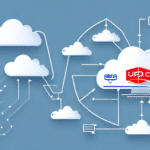Integrating UDS with Sendcloud: A Step-by-Step Guide
Integrating Universal Delivery Service (UDS) with Sendcloud streamlines your shipping operations, enhancing efficiency and reducing costs. Follow these steps to connect both platforms:
- Log in to Your Sendcloud Account: Access your dashboard by logging into Sendcloud.
- Navigate to Integrations: Go to the integrations section in your Sendcloud account settings.
- Select UDS Integration: Choose UDS from the list of available integrations.
- Connect Your UDS Account: Enter your UDS credentials and authorize the connection.
- Configure Settings: Adjust the integration settings to align with your shipping preferences.
- Verify Integration: Ensure the connection is successful by performing a test shipment.
Once integrated, you can utilize advanced features such as real-time tracking and automated notifications to enhance your shipping process.
Benefits and Features of UDS for Sendcloud
Leveraging UDS with Sendcloud offers numerous advantages that can transform your shipping operations:
- Increased Efficiency: Automate repetitive tasks to save time and reduce manual errors.
- Cost Reduction: Optimize shipping routes and choose the most cost-effective carriers.
- Enhanced Customer Satisfaction: Provide real-time tracking and timely deliveries to improve the customer experience.
- Greater Flexibility: Manage multiple carriers and shipping options from a single platform.
Key features include:
- Integrated Label Printing: Streamline the labeling process for faster shipment preparation.
- Real-Time Tracking: Monitor shipments from dispatch to delivery with live updates.
- Automated Notifications: Keep customers informed with automatic delivery and status alerts.
- Carrier-Specific Shipping Rules: Customize shipping parameters based on carrier capabilities.
For a comprehensive overview of e-commerce integrations, refer to the Magento Resource Center.
Optimizing Your Sendcloud Delivery Process with UDS
Optimization is key to ensuring efficient and reliable shipping. Here’s how to enhance your delivery process using UDS with Sendcloud:
Automated Shipping Rules
Set up automated rules based on criteria such as weight, size, and destination to streamline shipping decisions. This reduces the manual workload and ensures consistency in your shipping process.
Real-Time Shipment Tracking
Utilize UDS's real-time tracking capabilities to gain visibility into your shipments. This allows you to proactively address any issues that may arise, ensuring timely deliveries.
Advanced Reporting and Analytics
Analyze your shipping data to identify trends and areas for improvement. Metrics such as delivery times, costs, and customer satisfaction can guide your optimization strategies.
Customizable Delivery Options
Offer various delivery options like same-day, express, and weekend deliveries to cater to different customer needs, enhancing their overall experience.
According to a [POSTAL DATA REPORT](https://www.postalpro.com/resources/reports) from 2023, businesses that optimize their shipping processes see a 20% increase in customer satisfaction.
Managing Complex Shipping Scenarios with UDS and Sendcloud
Handling complex shipping scenarios requires robust tools and strategies. UDS combined with Sendcloud provides the necessary functionality to manage intricate shipping needs effectively:
International Shipping
When shipping internationally, UDS assists in selecting the most suitable carriers based on region-specific requirements, ensuring compliance with local regulations and reducing the risk of delays.
Multi-Carrier Management
Manage multiple carriers seamlessly, allowing you to switch carriers based on cost, speed, and reliability. This flexibility ensures that you can meet diverse shipping demands efficiently.
Customized Shipping Labels and Notifications
Tailor your shipping labels and notifications to align with your brand, providing a professional and cohesive customer experience.
Automated Returns Management
Streamline the returns process with automated management tools, making it easier for customers to return items and for you to process them efficiently.
Research by the Forrester Report highlights that effective multi-carrier management can reduce shipping costs by up to 15%.
Best Practices for Integrating and Managing UDS with Sendcloud
To maximize the benefits of integrating UDS with Sendcloud, adhere to the following best practices:
- Set Up Automated Shipping Rules: Automate decisions to ensure consistency and efficiency.
- Track Shipments in Real-Time: Maintain visibility to proactively handle any issues.
- Customize Labels and Notifications: Enhance your brand presence and improve customer communication.
- Diversify Your Carrier Selection: Utilize multiple carriers to optimize costs and delivery times.
Additionally, regularly review and analyze your shipping data to identify improvement opportunities. Implementing data-driven strategies can lead to significant enhancements in your shipping operations.
For more insights on e-commerce best practices, visit the Shopify Blog.
Troubleshooting Common Issues with UDS and Sendcloud
Despite its robust features, you may encounter challenges when using UDS with Sendcloud. Here are common issues and how to address them:
Delivery Delays
Delays can occur due to various factors like carrier issues or incorrect addresses. To troubleshoot:
- Verify shipment details and addresses.
- Contact the carrier for status updates.
- Use UDS’s tracking tools to monitor progress.
Lost Packages
Prevent lost packages by ensuring accurate labeling and tracking. If a package is lost:
- Investigate tracking history to locate the package.
- Communicate with the carrier for resolution.
- Notify the customer and arrange for a replacement if necessary.
Shipping Errors
Errors in shipping can be minimized by:
- Double-checking shipping information before dispatch.
- Using barcode scanners to ensure correct label placement.
- Implementing automated validation checks in Sendcloud.
Customs Issues in International Shipping
To avoid customs-related problems:
- Research customs requirements for each destination country.
- Ensure all necessary documentation accompanies the shipment.
- Consider partnering with a customs broker for complex shipments.
If issues persist, contact Sendcloud Support for specialized assistance.
Scaling Your Shipping Operations with UDS and Sendcloud
As your business grows, scaling your shipping operations efficiently is crucial. UDS and Sendcloud provide tools to support your expansion:
Access to Multiple Carriers
UDS offers connections to a wide range of carriers, allowing you to scale your shipping capacity without compromising on service quality.
Automated Shipping Rules
With increased volume, automation becomes essential. Automated rules ensure that shipments are processed quickly and accurately, even as order volumes rise.
Customizable Shipping Solutions
Tailor your shipping options to meet the diverse needs of a growing customer base, including international deliveries and expedited shipping services.
Advanced Analytics
Utilize comprehensive analytics to monitor performance metrics, understand shipping trends, and make informed decisions to support your scaling efforts.
According to a study by McKinsey & Company, businesses that effectively scale their shipping operations can achieve up to a 25% increase in operational efficiency.
Reducing Shipping Costs with UDS and Sendcloud Optimization
Reducing shipping costs is pivotal for maintaining healthy profit margins. Here are strategies to achieve cost savings using UDS and Sendcloud:
Optimize Carrier Selection
Utilize UDS’s carrier comparison tools to select the most cost-effective carriers for each shipment. Consider factors like delivery speed, reliability, and cost.
Leverage Automated Shipping Rules
Automate shipping decisions based on predefined criteria to minimize errors and ensure the most efficient shipping methods are used.
Monitor and Analyze Shipping Data
Regularly review shipping performance data to identify cost-saving opportunities and eliminate inefficiencies.
Negotiate with Carriers
As your shipping volume increases, negotiate better rates with carriers to secure discounts and improved service terms.
Implement Package Consolidation
Combine multiple orders into a single shipment where possible to reduce the number of packages and lower shipping costs.
Research by Business Insider suggests that businesses can reduce shipping costs by up to 20% through strategic optimization.
By implementing these strategies, you can significantly lower your shipping expenses while maintaining high levels of service quality.






















